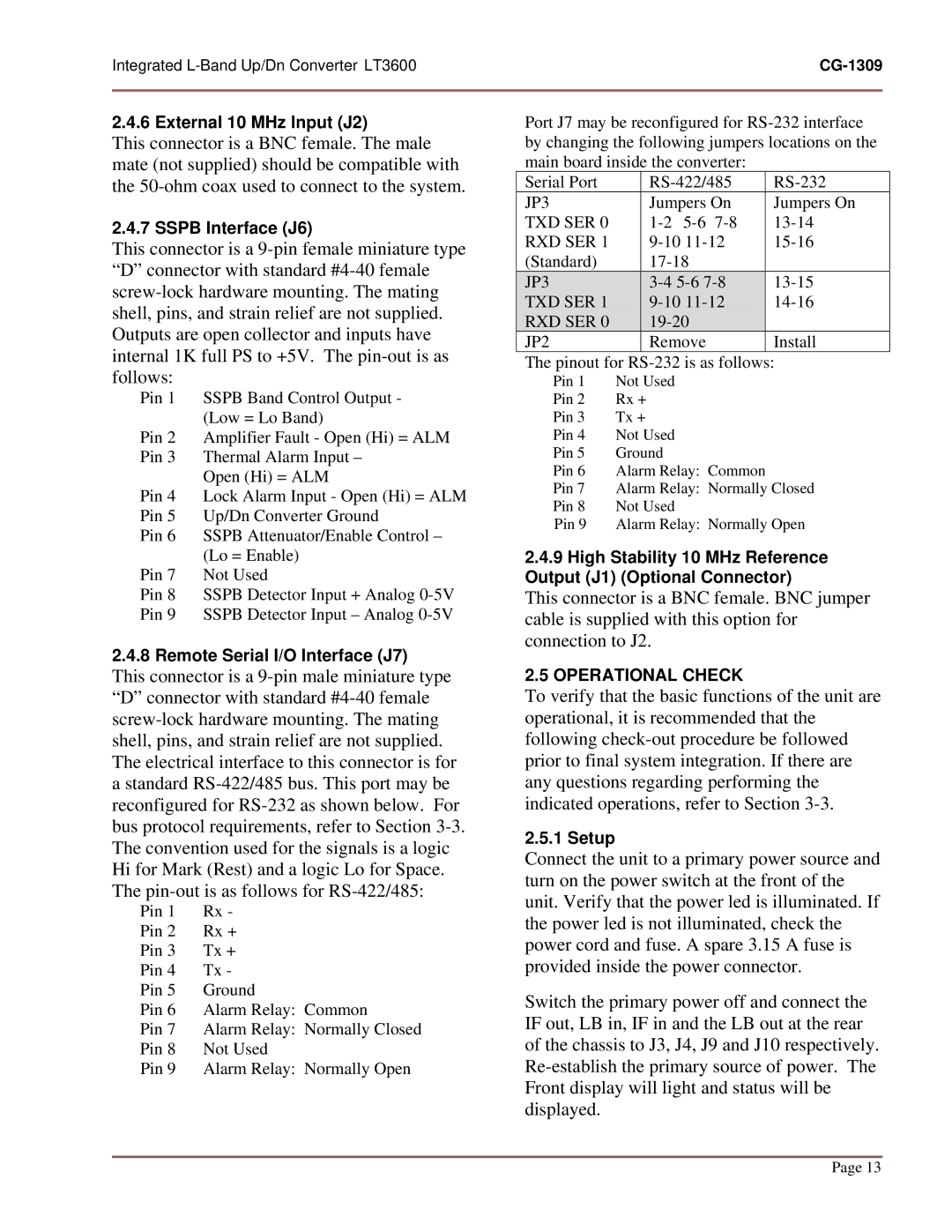UP/DN CONVERTER L-BAND, LT-3600 specifications
The General Dynamics LT-3600 is an advanced UP/DN converter designed specifically for L-band applications, tailored to meet the rigorous demands of modern communication and broadcasting systems. Known for its reliability and versatility, the LT-3600 supports a wide range of operational environments, making it a preferred choice for military, aerospace, and commercial users.One of the standout features of the LT-3600 is its ability to provide high-performance frequency translation with minimal signal degradation. The device operates within a frequency range typically from 950 MHz to 2150 MHz, allowing it to effectively handle various input and output frequencies, which is crucial for seamless integration into existing systems.
The LT-3600 employs advanced digital signal processing (DSP) technologies that enhance its performance in terms of linearity, noise figures, and phase stability. This results in superior signal clarity and reduced interference, ensuring that the converted signals maintain their integrity over long distances. The use of high-quality mixers and filters further contributes to its exceptional performance metrics, making it suitable for critical applications where signal fidelity is paramount.
In terms of usability, the LT-3600 boasts a user-friendly interface that facilitates ease of setup and operation. It is equipped with intuitive controls and indicators that provide real-time feedback on operational status, which is essential for monitoring performance during live operations. The device also offers options for both manual and remote control, enhancing its flexibility for different operational requirements.
Another significant characteristic of the LT-3600 is its robust design, featuring rugged components that can withstand adverse environments. The unit is engineered to comply with military standards, making it suitable for deployment in harsh conditions, including extreme temperatures and humidity. This reliability is critical for military and aerospace applications where equipment failures can lead to severe consequences.
Additionally, the LT-3600 supports various modulation schemes and can be easily integrated into systems requiring diverse communication protocols. This adaptability ensures that users can customize the unit to meet specific requirements, enhancing its appeal across multiple industries.
In summary, the General Dynamics LT-3600 UP/DN converter stands out for its advanced features, including superior signal quality, user-friendly operation, and rugged reliability. Its combination of innovative technologies and practical design makes it an essential component for anyone seeking high-performance L-band solutions in challenging environments.
